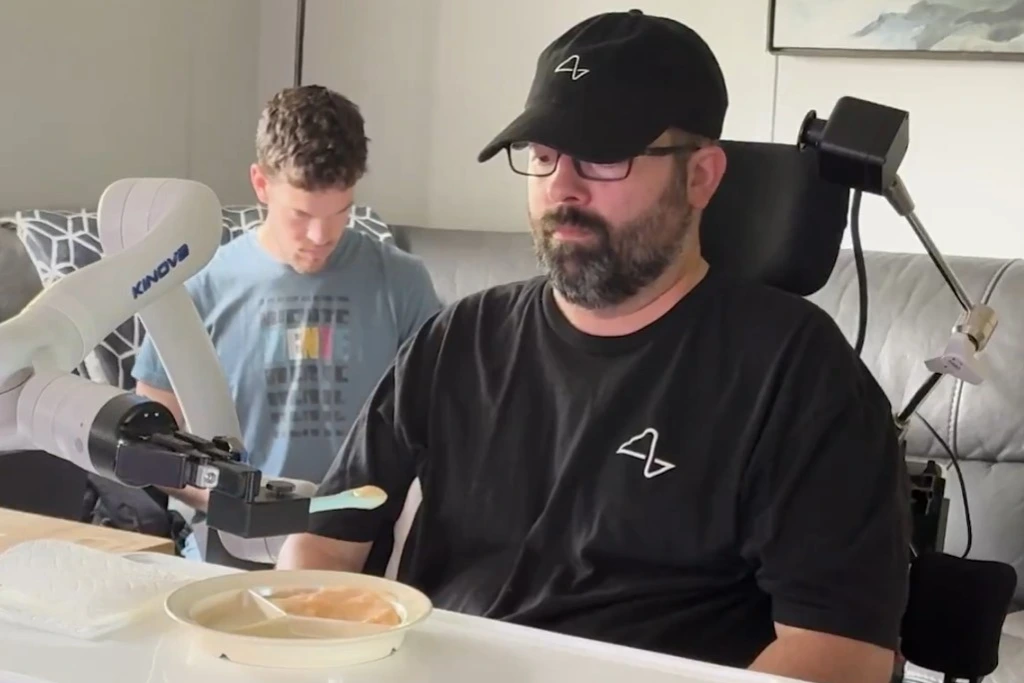Nick Wray didn’t make a grand gesture the first time he used Neuralink’s implant. He didn’t wave or shake someone’s hand. Instead, he focused on a glass of water. The robotic arm beside him moved, picked it up, and carefully lifted it to his lips.
For most of us, that’s an ordinary moment. For Wray, who lives with ALS, it was extraordinary. A task he had lost years ago was suddenly his again.
The technology behind this moment is Neuralink’s N1 brain implant, developed by Elon Musk’s neurotech company. Neuralink has been working on ways to connect human thought directly to machines. For Wray, it wasn’t about flashy tech—it was about drinking on his own.
The Challenge of ALS and the Search for Better Tools
ALS, or amyotrophic lateral sclerosis, is a devastating disease. It strips away control of the body step by step. Muscles weaken, speech fades, and even swallowing becomes difficult. But the mind stays sharp. Patients are fully aware of what’s happening—they just can’t act on it.
Technology has tried to help. Eye-tracking systems let patients type letters on a screen. Joysticks and switches allow for some movement control. These tools are useful, but they’re slow and awkward. They don’t feel natural, and for many people, they aren’t enough.
That’s why brain-computer interfaces are so exciting. Instead of forcing patients to work around their weakened bodies, BCIs let the brain talk directly to a device. Neuralink’s brain implant is one of the most ambitious attempts yet, promising faster, smoother control than the tools patients have now.
Nick Wray’s Journey
Wray’s diagnosis changed everything. Once independent, he gradually lost the ability to handle daily tasks—eating, using his phone, even moving around without help.
When Neuralink began human trials, he was selected as one of the participants. The implant surgery used hair-thin threads placed in the brain’s motor cortex. Recovery was smoother than expected, and soon Wray began training with the device.
He admits he wasn’t sure what to expect. Technology often overpromises. But when he used his thoughts to move the robotic arm for the first time, he described it as “a tiny victory that felt enormous.” For him, it wasn’t about science fiction. It was about dignity.


